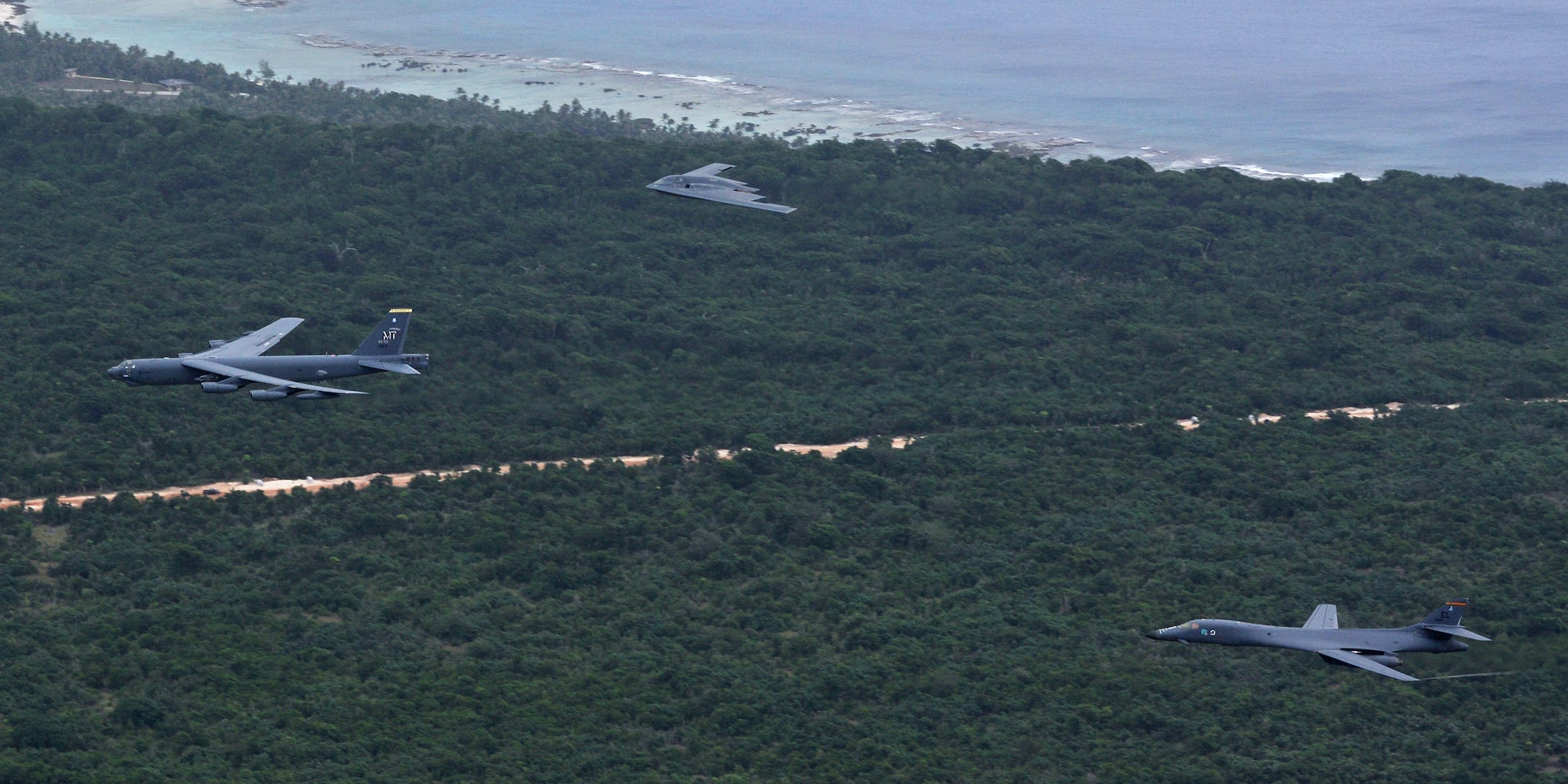
US Air Force/Senior Airman Joshua Smoot
- The US Air Force now fields some of the most advanced bombers that have ever flown and is working on the next one to join its fleet.
- Those aircraft, a cornerstone of the US’s ability to dominate battlefields, are the result of decades of innovation. Below you can learn more about the bombers that proceeded them.
- Visit Business Insider’s homepage for more stories.
Before the first ballistic missiles arrived in 1944, there was only one way a military could deliver large amounts of ordnance to enemy territory: bombers.
Bombers have played an essential part of warfare since their introduction. Their ability to flatten cities and cripple critical infrastructure and their role in the nuclear triad have cemented them as a must-have for any modern military.
The US military knows this well. For over 80 years, it has fielded some of the best bombers the world has ever seen.
The Flying Fortress
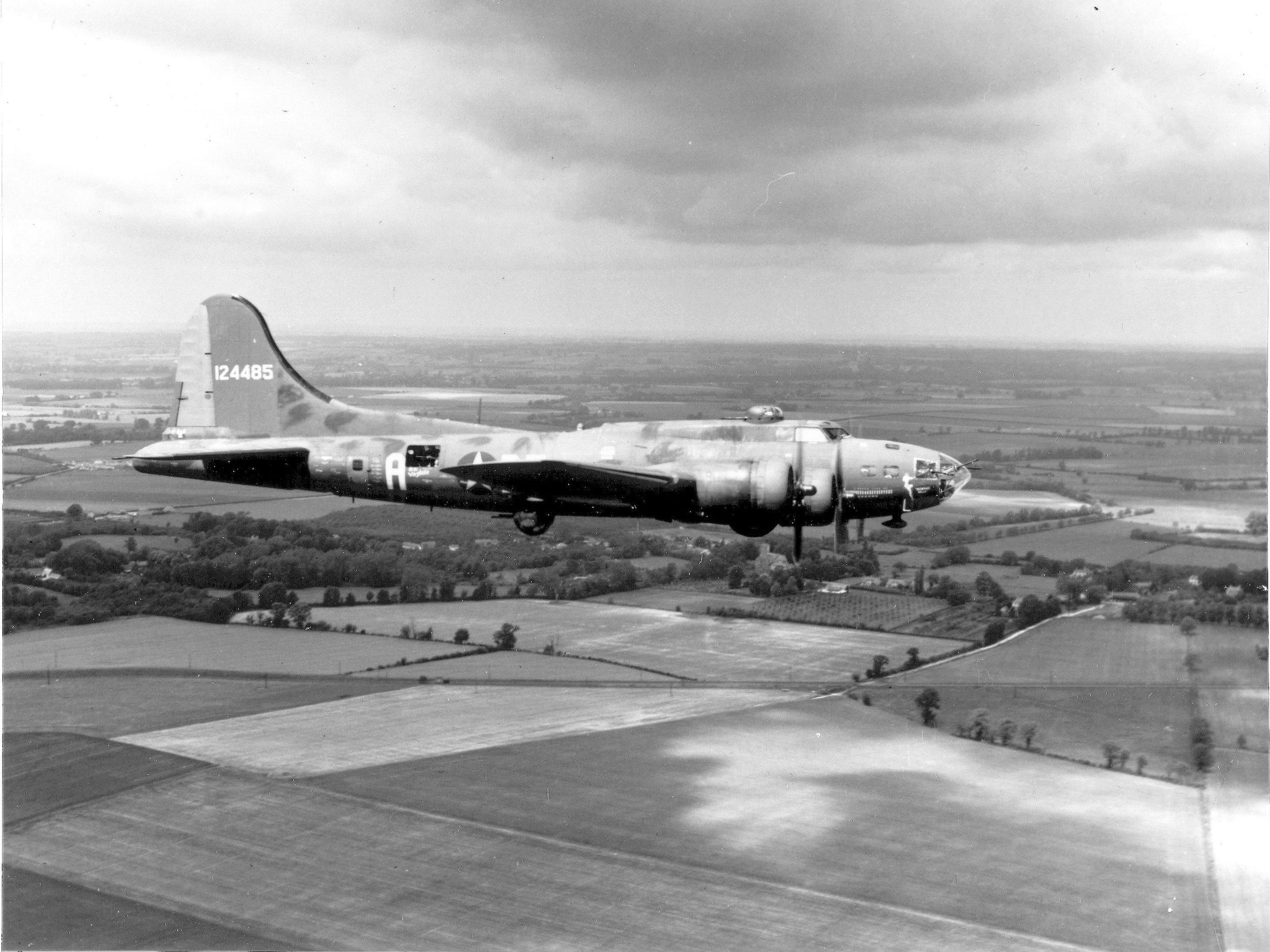
US Army Air Corps
The Boeing B-17 was built in response to a 1934 request by the US Army Air Corps (USAAC) for strategic bombers. The Corps wanted a plane capable of flying at 10,000 feet, at speeds of up 200 mph, with a range of 2,000 miles.
Within a year, Boeing flew its four-engine prototype, the B-17. A reporter from the Seattle Times, noting the 13 machine guns in turrets on the upper fuselage, belly, tail, and nose, described it as a “flying fortress.” Boeing loved the term and immediately trademarked it.
With a crew of 10, the bomber usually carried 4,000 pounds of bombs and had a service ceiling over 25,000 feet, with a maximum speed of 287 mph and a range over 2,000 miles.
B-17s made their combat debut with the British Royal Air Force in 1941 but soon saw action with US forces in Europe and the Pacific. Despite its appearance, the B-17 was not capable of fighting off enemy fighters alone and suffered casualty rates as high as 20%.
This was especially the case for the Army Air Corps, which was responsible for daylight bombing raids over Europe. In one raid on Schweinfurt in Germany, the US lost over 60 of 291 bombers and had 650 crew members killed or captured.
But B-17s were the workhorse of the US bomber fleet in Europe. More than 12,700 were built, and they served on all fronts in WWII, wreaking havoc on German and Japanese targets.
The Liberator
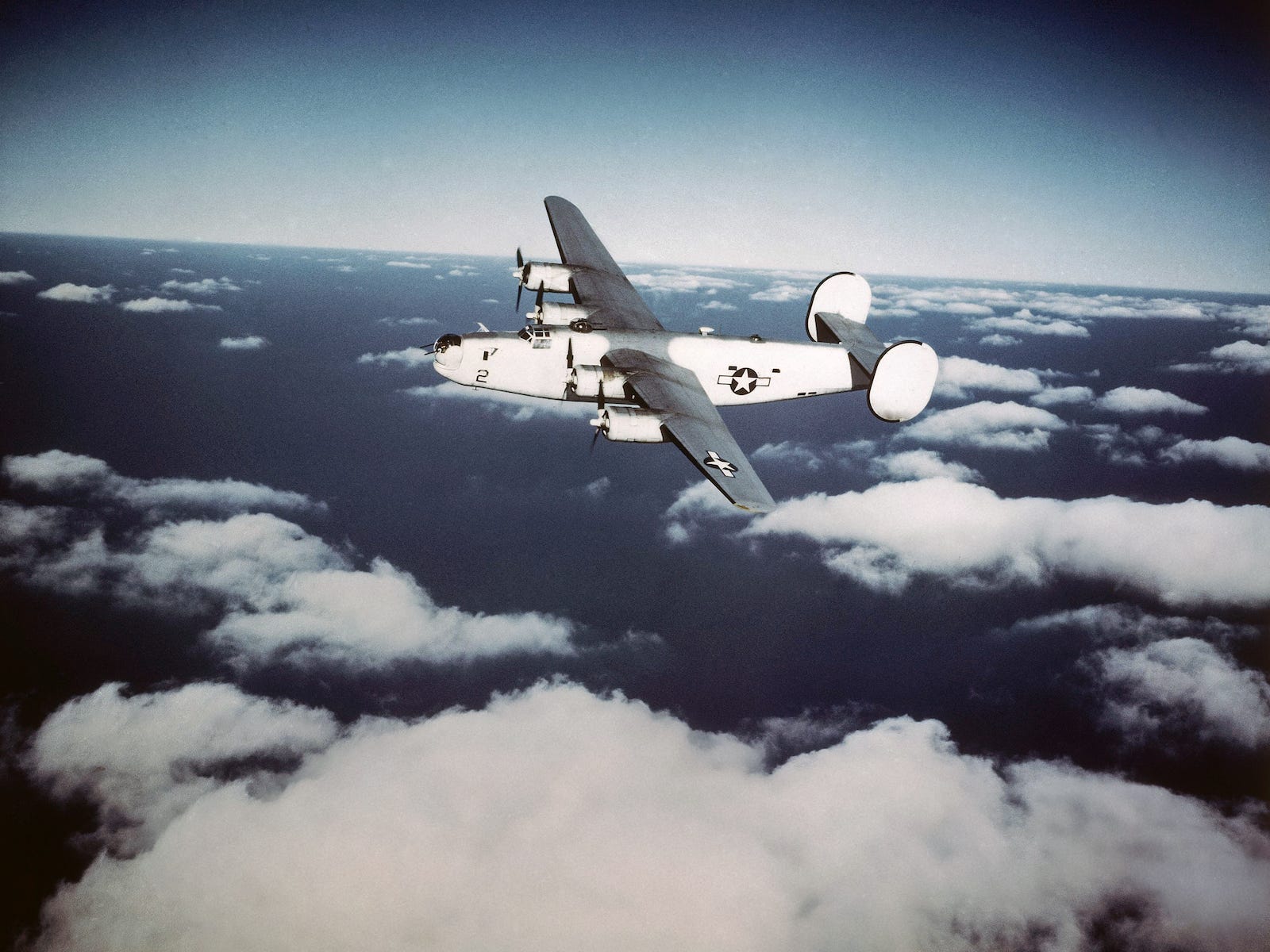
(AP Photo)
The B-24 originated from a 1938 request from the USAAC to Consolidated Aircraft to build licensed copies of the B-17. The company instead decided to submit its own design.
What it built was a winner. With a crew of 11, the B-24 could carry 8,000 pounds of bombs, fly up to 28,000 feet, reach speeds up to 300 mph, and had a range of 3,000 miles.
Like the B-17, the B-24 first saw action with the British and was widely praised, earning the name "Liberator."
Liberators served in all theaters of WWII and in all branches of the US military. While the B-17 was preferred by the Americans in Europe, it was almost entirely replaced in the Pacific by the Liberator, which had a much greater range.
The B-24 had a number of variants for different missions, including a transport version capable of carrying a 10,000-pound payload up to 1,000 miles, or 6,000 pounds over 3,300 miles, helping close the Atlantic Gap.
In all, 18,482 Liberators were built, making it the most-produced bomber in history.
The Superfortress
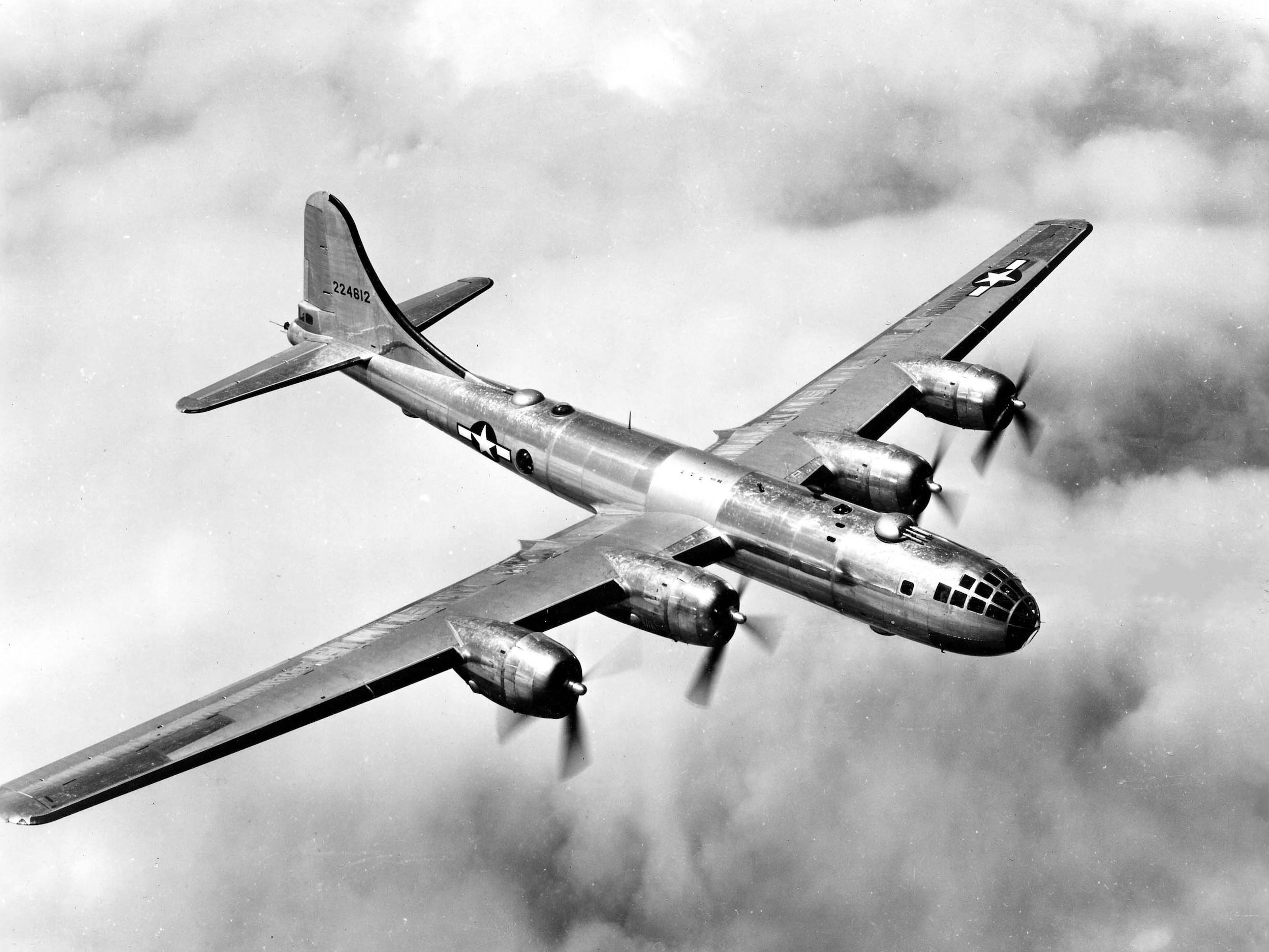
US Defense Department
The Boeing B-29 was the peak of WWII bomber technology. Crewed by 11 airmen, it had pressurized cabins, four remote-controlled turrets, and four 2,200-horsepower engines.
It could fly as fast as 365 mph, as far as 5,000 miles, and as high as 31,800 feet. Its maximum payload was 20,000 pounds. It was named the "Superfortress," an allusion to the B-17.
B-29s were used almost exclusively against Japan. Flying from bases in India and China and on Pacific Islands, B-29 bombing runs destroyed entire cities. One mission saw as many as 300 B-29s drop almost 250,000 incendiary bombs on Tokyo.
The Soviet Union, unable to build its own efficient long-range bomber, reversed-engineered B-29s that made emergency landings in Soviet territory, building over 800 of them.
Two modified B-29s were used to drop the atomic bombs on Hiroshima and Nagasaki, auguring bombers' important role in nuclear warfare. B-29s continued to be used during the Korean War and were retired only with the arrival of the jet age.
The Stratofortress
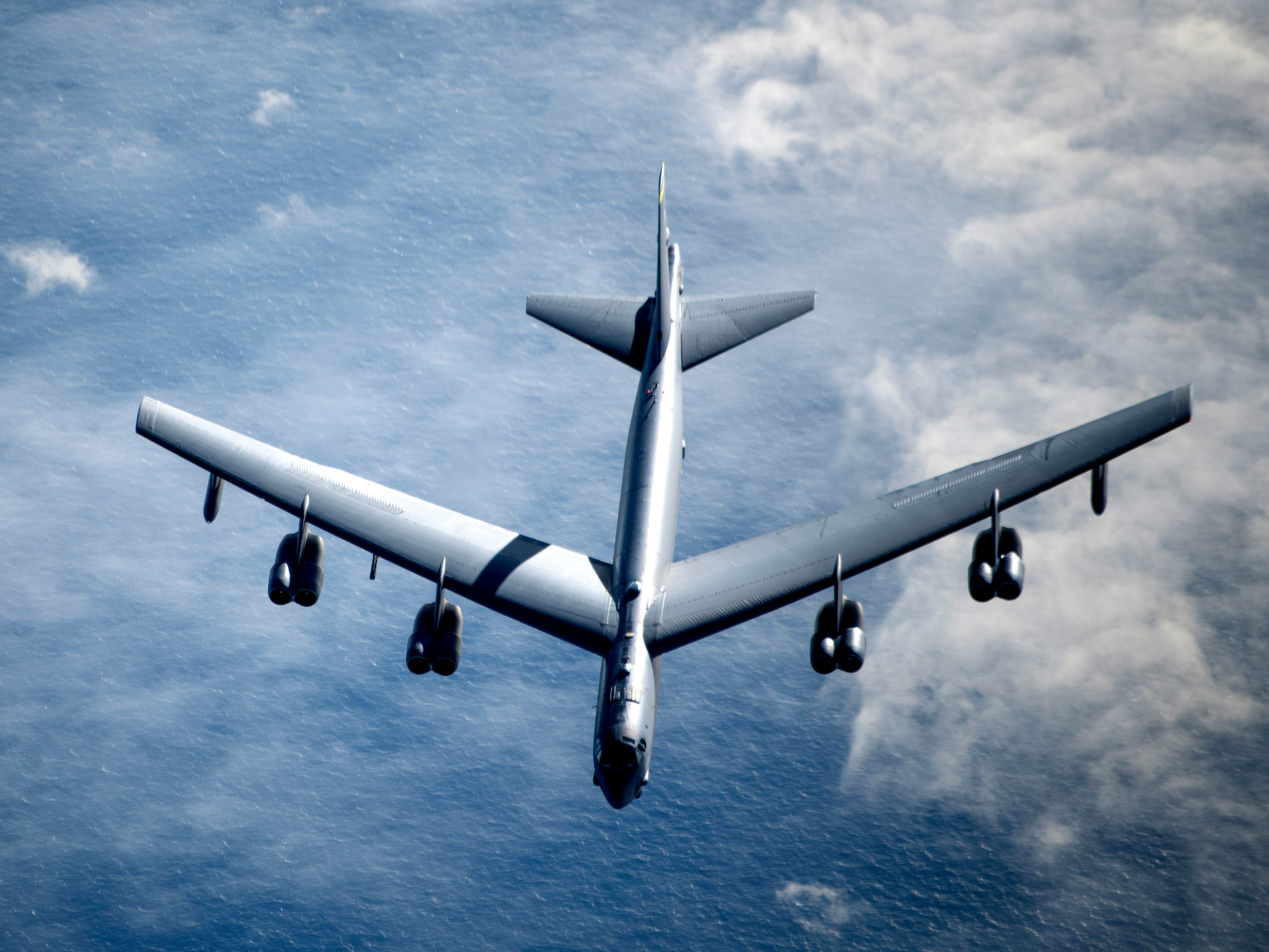
Photo by Tech. Sgt. Emerson Nuñez
With nuclear weapons and jet engines now in play, bomber design shifted focus to intercontinental ranges and heavier payloads. The Convair B-36 Peacemaker was the first step, but its propeller-driven engines and lack of aerial refueling capability meant its life was short.
The result was the B-52 Stratofortress. Adopted in 1955, it has a range of over 8,000 miles, a ceiling around 43,000 feet, and a top speed of 650 mph. The B-52 can deliver a massive 70,000 pounds of ordnance. It was a key part of the nuclear triad that was developed around the time the bomber arrived.
The B-52 had a central role in the Vietnam War. Its carpet-bombing missions during Operation Linebacker II dropped over 15,000 tons of bombs on North Vietnam in just 11 days. The B-52 was also the last bomber in which tail gunners scored a confirmed kill against enemy aircraft.
The B-52 has received numerous upgrades, allowing it to drop precision munitions as well as missiles. It has conducted bombing operations in Afghanistan, Iraq, and Syria, and is still in active service.
The B-1 Lancer was introduced in 1986 to replace the B-52. Capable of flying over 7,000 miles at 30,000 feet, it has a payload of over 70,000 pounds and a speed of 900 mph. It too has seen extensive service with the Air Force and is a critical part of its bomber fleet.
But the B-52 has proven so adaptable — and the B-1 has been so strained by the war on terror — that the Stratofortress may outlive its replacement.
The Spirit
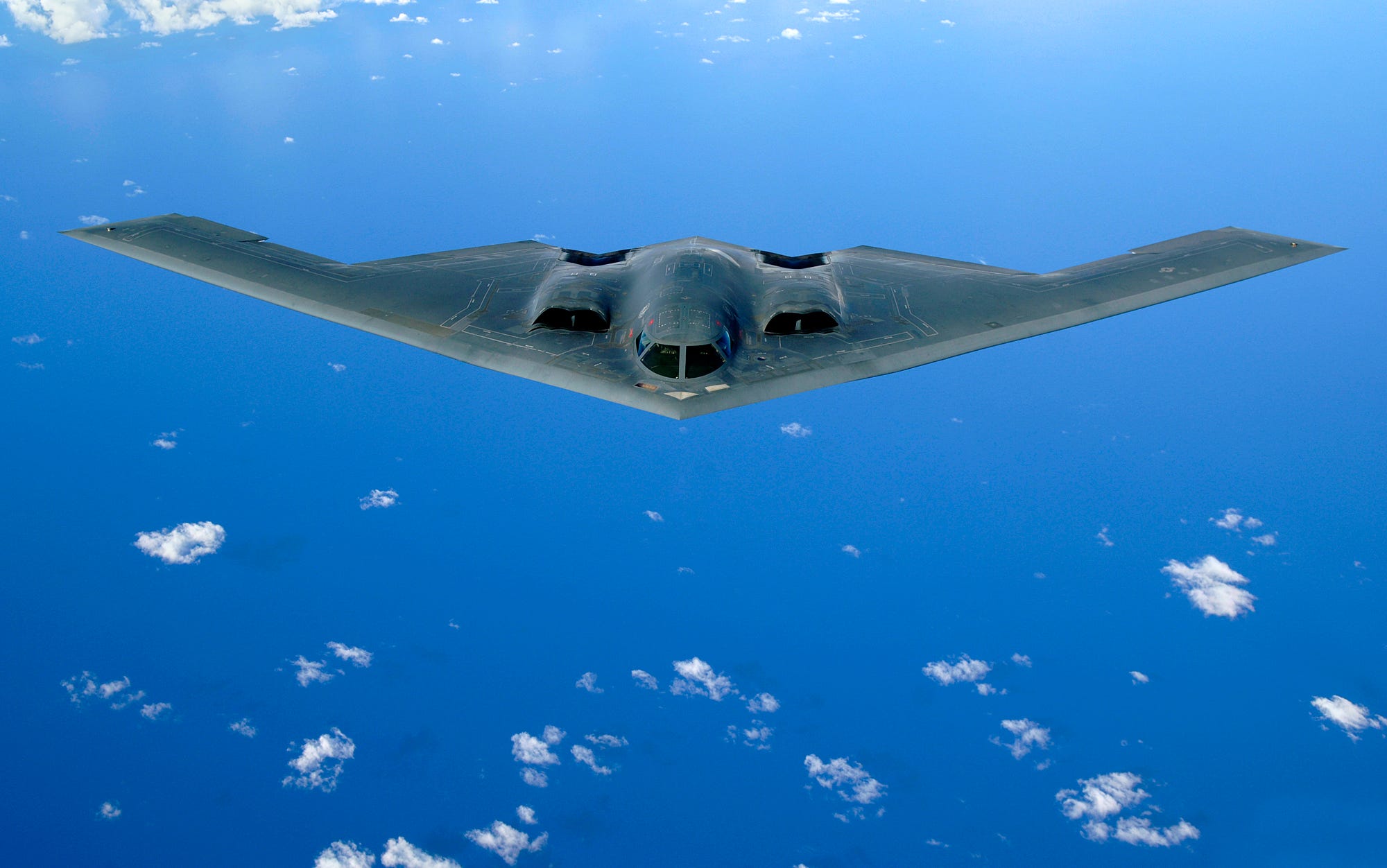
US Air Force
No bomber that has flown has been as advanced as the B-2 Spirit, the world's first stealth bomber.
With a crew of two, the B-2 has a range of 6,900 miles, a ceiling of 50,000 feet, and a top speed over 600 mph. It can deliver over 40,000 pounds of ordnance and is known for flying bombing missions as long as 33 hours.
The Spirit is designed to fly into enemy territory undetected, drop conventional or nuclear weapons, and return unscathed, and it has done so in Kosovo, Iraq, Afghanistan, and Libya.
B-2s destroyed 33% of all Serbian targets in the first eight weeks of Operation Allied Force and dropped 1.5 million pounds of munitions during Operation Iraqi Freedom. They have also flown from Missouri to Korea and back as a show of strength against North Korea.
With 21 built, the B-2 is expected to be in service until the early 2030s, when it will be replaced by its successor, the new and also stealthy B-21 Raider.
